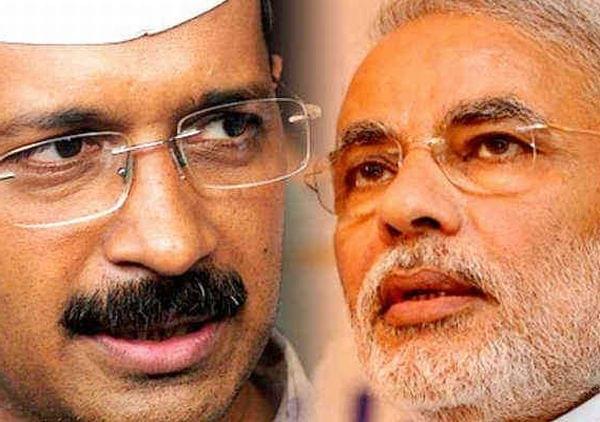Commentary
Grievance Redressal: Modi vs. Kejriwal
Kalavai Venkat
Jan 15, 2014, 06:43 PM | Updated Apr 29, 2016, 01:04 PM IST
Save & read from anywhere!
Bookmark stories for easy access on any device or the Swarajya app.



Redressing public grievances effectively is an important aspect of good governance. Narendra Modi and Arvind Kejriwal offer a study in contrast when it comes to hearing and responding to public grievances.
Modi launched SWAGAT, a public grievance redressal system in 2003. It is a three-tiered system which is implemented at the taluk, district, and state levels. A Gujarat State-wide Network, GSWAN, connects the state central secretariat, all 25 district headquarters, and every taluk headquarter using an Intranet system in order to administer and manage SWAGAT cases. As this article points out:
- Every grievance is logged online and routed to a government official, who has to respond to it within 4 hours. In other words, the Service Level Agreement (SLA) times for response in SWAGAT surpass those in developed nations.
- These complaints are reviewed daily using video conferencing technology which brings the complainant and officials together.
- Most complaints are resolved on the same day.
- Modi continually evaluates the progress based on the grievance resolution rate.
It is no surprise that SWAGAT won the United Nations Public Service Award in 2010.
Now, let us turn to Kejriwal. He recently announced a janta darbar in Delhi where the public could submit their grievances to him in person. However, it ended in a stampede and Kejriwal abandoned plans to hold such darbar in the future. Kejriwal also announced an anti-corruption hotline where the public could report incidents of corruption. However, this is only a symbolic gesture because the 15 personnel monitoring it cannot record and respond to the thousands of incidents of corruption that happen daily.
His third initiative of regulating private school admissions is welcome because these schools, which are allegedly registered as charitable organizations, fleece the parents by charging exorbitant donations and fees. However, Kejriwal’s approach to resolving this grievance is once again symbolic: a helpline to report grievances. How does one record, let alone resolve, admission-related grievances when millions of children seek admissions? How does one enforce accountability in resolution once grievances are recorded? Kejriwal doesn’t have the answers.
Kejriwal’s initiatives seem to have been hastily stitched together without a chain of in-built accountability. This is puzzling because the AAP campaigned on abolishing corruption and redressing public grievances for nearly a year. They had enough time to design an effective grievance redressal system. Why did Kejriwal and his advisors not do it? Did they not think beyond slogans and symbolic gestures?
Thomson Reuters reports that the anti-corruption hotline launched by Kejriwal remains constantly unreachable. This is an early warning alert that hastily woven initiatives without a systemic rigor are unlikely to benefit the public. However, it is doubtful whether Kejriwal is paying attention. He continues to announce that he would be available “once a week for two to three hours to meet the people.” Delhi has a population of over 10 million people. A sizeable subset of this population would have grievances.
Is it even remotely possible for a chief minister to meet them personally? Wouldn’t a visionary and responsible chief minister who is sincere about redressing grievances rather implement a fully accountable system which leverages technology effectively than indulge in ineffective token gestures?
It is reported that the hotline received 4,500 grievance complaints on day one itself. This translates to three minutes to record a case which is quite insufficient to record all pertinent information and determine how it should be routed for resolution. How is the resolution of the cases being tracked? How many of these have been resolved since then?
If the resolution rate is nowhere near what SWAGAT has consistently achieved over a decade, Kejriwal would do well to emulate and learn from Modi to build a grievance redressal system similar to SWAGAT rather than launch a series of ineffective token gestures. There is no shame in borrowing someone else’s proven ideas in the interests of society. On the other hand, if he persists with ineffective symbolic gestures at the expense of well thought out solutions, the public would grow wary of his intentions and capability.
A system which lacks an in-built chain of accountability would be easily manipulated. Therefore, it would rather aggravate suffering than mitigate it. A sting operation revealed that many candidates of the AAP eagerly negotiated or accepted bribes to resolve public grievances even before they were elected to the legislature.
In the absence of checks and balances and a well-defined system, such candidates, who are now legislators, could indulge in wheeling and dealing to resolve grievances. Take a hypothetical scenario where a parent calls the helpline to complain that a school is illegally demanding a donation to admit her child. In the absence of transparency, nothing would prevent an AAP legislator from accepting a bribe and siding with the extortionist school. On the other hand, if a system like SWAGAT is implemented, every grievance would be transparently tracked. It would deter the wheeler and dealer.
A well-designed and transparent system like SWAGAT will also make it extremely difficult for the politicians to shield those accused of taking bribes. In the absence of such a system, there is no accountability and the politicians and officials are not under any compulsion to resolve grievances in a time-bound manner. The conduct of Kejriwal in the sting operation where the AAP candidates were shown to be accepting bribes proves this.
Kejriwal first shielded the accused from public scrutiny and then promised that AAP would internally investigate the matter. Two months later, the public has not yet been apprised of the progress of this alleged internal investigation. What would prevent the Kejriwal government from behaving similarly in dealing with public grievances in the absence of a transparent grievance redressal system?
It is not enough to launch initiatives that merely provide a good photo-op. Such initiatives should be backed by a systemic framework with in-built transparency and accountability to effectively resolve public grievances.
(The post was originally published here.)
Kalavai Venkat is a Silicon Valley-based writer, an atheist, a practicing orthodox Hindu, and author of the forthcoming book What Every Hindu Should Know About Christianity.




